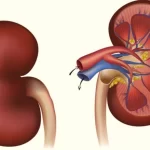Role of Benign prostatic hyperplasia Causes And Treatment
Friend’s, today we know about Benign Prostatic Hyperplasia Causes, Symptoms And Treatment. A gland called the prostate is found only within the body of men. This gland becomes large in size because it becomes difficult to urinate. This problem is typically found only after 60 years, ie in older men.
The number of patients affected by (BPH) has also increased thanks to the rise in average age in India and everyone over the planet.
Where is that the prostate gland? What are his functions
In men, a betel-shaped prostate lies within the bladder neck area, which is wrapped around the initial a part of the ureter. That is, the initial a part of the ureter that passes through the bladder passes through the prostate.
The semen tubes undergo the prostate and open on each side within the ureter. For this reason, the prostate may be a major part of the genital system of men.
What’s benign prostatic hypertrophy?
- Benign prostatic hypertrophy means a rise within the size of the prostate commonly found with aging.
- This b. PH discomfort doesn’t include prostate discomfort thanks to infection, cancer or other reasons.
- (BPH) symptoms begin after the age of fifty years. quite half the lads reach the age of 60 years and 90% of men are 70 to 80 years aged. Symptoms of P.H.
- (BPH) maybe a disease of men only, during which there’s difficulty in urination at an older age.
Benign Prostatic Hyperplasia symptoms:
The main problem in men thanks to (BPH) is:
- Go to frequent urination in the dark.
- Slowing and thinning of urine.
- Taking a short time to start out urinating.
- Intermittent urination.
- There is a robust desire to go away early urination, but not control and sometimes urination in clothes.
- Even after urination, dripping urine.
- Not having full urination and not having the satisfaction of urinating.
- Serious (BPH) If left untreated, it can cause serious problems after time.
Benign Prostatic Hyperplasia Causes by:
- Sudden urination and urine with the assistance of a catheter.
- The bladder isn’t completely empty thanks to not having full urine.
- For this reason, frequent urination can occur and therefore the doctor has difficulty in controlling the infection.
- A significant amount of urine accumulates within the bladder because of the urethra increases. due to this, there’s a blockage within the way of urination within the bladder from the kidney. As a result, the ureters and kidneys swell. If this problem continues to extend gradually, then after a while, serious problems like renal failure also can occur.
- (BPH) The flow of urine slows down and one has got to choose frequent urination in the dark.
- There is also an opportunity of stones thanks to frequent urination collecting within the bladder.
- remember! (BPH) might not be in danger of prostatic adenocarcinoma.
Benign Prostatic Hyperplasia treatment
(BPH) treatment is affected thanks to the subsequent reasons:
- Severity of symptoms
- To what extent do these symptoms affect lifestyle.
- What quite a treatment is out there with him?
The main purpose of diagnosis (BPH) is to scale back its symptoms, improve the standard of life, reduce the quantity of post-void urine and B. Prevent complications of PH.
(BPH) treatment is often divided mainly into three parts.
- Be observant and alter in lifestyle (no treatment)
- Medical treatment.
- Surgical treatment.
Diagnosis of prostatic adenocarcinoma is often done by examination of blood (PSA).
Staying alert, waiting and making lifestyle changes (no treatment)
“Wait and See” with no treatment. this is often the well-liked method for men especially those that have mild symptoms of (BPH) or symptoms that don’t cause them any discomfort. But this doesn’t mean that wait and (BPH). Do nothing to scale back the symptoms. In such a careful waiting period, an individual should change his lifestyle in order that the symptoms of (BPH) are reduced. It should be checked regularly to ascertain if the symptoms are improving or worsening.
Follow some good habits
- Make simple changes in urination habits and quantity of beverages.
- Empty the bladder regularly. don’t hold urine for long. Quit urination as soon as you’ve got a robust desire.
- Double wide means passing urine twice consecutively. First, empty the bladder normally and comfortably. Then after waiting a couple of moments attempt to urinate again.
- Avoid drinking caffeinated beverages and alcohol. Both affect the strength of the bladder muscles. Both stimulate/stimulate the kidney to supply urine. These are the leading factors for urination in the dark time.
- Avoid excessive intake of fluids. (Less than 3 liters of fluid during a day) rather than consuming tons of fluids directly, rather than taking the fluids throughout the day, stop and consume the fluids.
- Do not take cold and cold medicines an excessive amount of as they contain antihistamines or decongestants which may cause urethral obstruction and also increase the symptoms of the disease.
- Workout regularly and keep yourself healthy. weather and lack of manual labor can increase the disease.
- Learn and do pelvic strengthening exercises because it is beneficial to stop leakage of urine. Pelvic (pelvic) workout strengthens the pelvic muscles, supports the bladder and helps to shut the sphincter. This exercise causes the pelvic muscles to contract and loosen repeatedly.
- Without the mild symptoms of (BPH), no medicine is effective only in lifestyle changes.
- Bladder training focuses on timing and urination. Urination should be tried at regular times.
- Treatment of constipation.
- Keeping stress low – Stress and tension can cause more urination.
Benign Prostatic Hyperplasia Causes Treatment by medicine:
- When (BPH) doesn’t cause excessive urination and there’s no significant issue, most such patients are treated easily and effectively by medication.
- These sorts of drugs include alpha-blockers (prazosin, terazosin, doxazosin, tamsulosin, etc.) and finasteride and deuteride drugs.
- In the treatment of the drug, the urethral obstruction begins to decrease and urination easily occurs with none discomfort.
Which patients require specific treatment?
Patients who don’t have a satisfactory benefit despite proper medication require specific treatment. the issues described below require the treatment of binoculars, operations or other specialized methods.
In spite of trying, no urination or urination with the assistance of a catheter.
- Frequent urination infection or bleeding within the urine.
- Even after urination, an excessive amount of urine remains within the bladder.
- Kidney and ureter bloating thanks to increased urination within the bladder.
- Stones thanks to urination.
Benign Prostatic Hyperplasia Causes Specific Treatment:
If treatment isn’t achieved satisfactorily by medicine, other treatment options are as follows:
At present, most (BPH) patients are often treated with medicines.
Benign Prostatic Hyperplasia Causes Treatment By Surgery
This treatment also can be divided into two parts:
Surgical and minimally invasive treatment by incision. the foremost common and standard surgery for the prostate may be a transurethral division of the prostate by binoculars. Currently, many new methods are being developed in order that the prostate of small to medium size is often treated by surgery. Its main objective is to realize better results with lower cost and illumination than (TURP).
Treatment by binoculars – T.U. R. P.
B. it’s the only, effective and hottest method for the treatment of PH. at the present, most of the patients (not quite 95 percent) (BPH) who don’t have special benefits from the treatment of the drug, the prostate knot is removed by this method.
- There is no need for operation, incision or soldering during this method.
- This treatment is typically done by giving the patient an injection into the spine without making him unconscious, numb the lower a part of the waist.
- In this activity, a telescope is far away from the tract (ureter) by scrapping the part of the prostate knot.
- This procedure is completed continuously through binoculars or video endoscopy in order that the obstructing a part of the prostate is often removed within the correct quantity and through this point, the blood beginning is often controlled carefully.
- After this operation, the patient usually has got to stay within the hospital for 3 to four days.
Benign Prostatic Hyperplasia Causes Treatment by operation:
When the prostate node is just too large or it’s necessary to possess an operation of a cystolith, consistent with the experience of the urologist, this treatment can’t be effective with binoculars.
(BPH) is that the best and best method of treatment when the drug is unsuccessful (TURP).
In some such patients, the tactic of operation is employed. during this operation, usually, the part of the pelvis and therefore, therefore, the bladder is cut out and the knot of the prostate is removed.
Benign Prostatic Hyperplasia Causes Other methods of treatment:
The following are the less popular methods of treatment (BPH).
Reduce obstruction of urethra by making an incision on the prostate with the assistance of binoculars
- Laser treatment
- Heat treatment
- Special urethral treatment
(BHP) should the patient establish contact with the doctor?
(BPH) the patient should contact the doctor immediately if
- Blocked urination or urination completely.
- Blood within the urine.
- Feeling of burning or pain while urinating, smelly urination or fever with a chilly.
- Unable to regulate urine, which ends up within the wetting of underclothes or urinating in bed.
- T.U. R. P. The operation is performed by binoculars without being sedated and has got to stay within the hospital for a couple of days.





